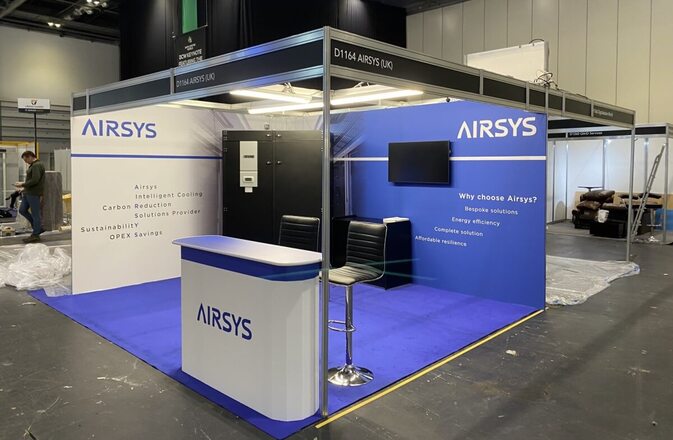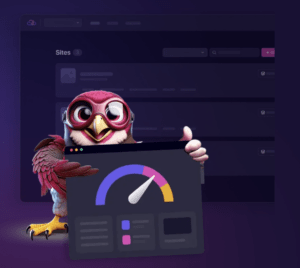
Airsys Cooling Technologies has introduced PowerOne, a modular, high-efficiency cooling architecture engineered to support the growing wave of AI, hyperscale, and high-density compute deployments. Designed to serve facilities ranging from 1MW edge locations to 100MW-plus hyperscale campuses, PowerOne represents one of the company’s most ambitious product launches to date.
The product launch would reflect the escalating pressure on data center cooling systems amid record power densities.
The announcement arrives at a moment of rapid market acceleration. Horizon Grand View Research projects the North American data center cooling segment will reach roughly $15 billion by 2030. As AI-driven rack densities climb – now commonly exceeding 50-100 kW in GPU clusters – cooling is consuming as much as 60 percent of total energy use in some data centers. These dynamics are pushing operators to rethink the economics of temperature control, the scalability of legacy mechanical infrastructure, and the amount of stranded power left unused.
Airsys CEO and founder Yunshui Chen said the new platform reflects a shift in how cooling should be understood – not as a static utility but as a strategic enabler of compute output. “With PowerOne, we’re redefining what a cooling system should do,” said Yunshui Chen. “These solutions are focused not just on energy efficiency, but on unlocking stranded power and turning it into computing capacity – and ultimately, revenue.”
PowerOne is structured around two primary solution stacks: a standard cooling stack for traditional air-assisted operation and a LiquidRack single-phase liquid spray cooling approach designed specifically for AI-era workloads. The standard stack incorporates a magnetic-bearing centrifugal chiller, precision CDUs, high-performance fan walls, and optimized CRAH units. Meanwhile, the LiquidRack line extends the system into compressor-less cooling and closed-loop liquid architectures, using dry coolers or chiller-supported configurations depending on climate and site requirements.
A key design goal is flexibility. PowerOne supports both new builds and retrofits, allowing data centers to scale cooling capacity in parallel with compute growth. The company says the approach can reduce energy consumption by more than 85 percent compared with traditional CRAC/CRAH systems, largely by reducing mechanical load and enabling more efficient heat extraction at the rack.
The product line is also built around emerging performance metrics. In addition to achieving zero water usage (0 WUE) and driving down power usage effectiveness (PUE), the system is optimized for Power Compute Effectiveness (PCE), an increasingly important metric for operators deploying large AI clusters. Unlike PUE – which measures facility efficiency – PCE tracks how much provisioned power is translated into usable compute. Higher PCE scores indicate that more energy is being directed toward actual workloads rather than overhead. Airsys positions PowerOne as a cooling foundation that increases PCE by minimizing wasted power and aligning temperature control directly with compute output.
The company also introduced Aegis, a liquid cooling innovation arm operating within Airsys but structured to move at the pace of the AI market. Aegis focuses on rapid development of CDUs, cold plates, and advanced control systems using 3D-manufacturing techniques. Its mission is to support PowerOne while driving faster iteration cycles for emerging liquid and two-phase cooling technologies demanded by hyperscalers and chipmakers.
Chen said the dual-track model – combining PowerOne’s enterprise-scale system design with Aegis’s rapid engineering cycles – will help prepare operators for an era where thermal management becomes central to AI infrastructure planning. “As demand for AI, connectivity, and digital services accelerates, Airsys is forging solutions to ensure that the systems powering modern life remain efficient, resilient, and future-ready,” he added.
Pre-orders for PowerOne are now open, with select availability planned for Q4 2025. Airsys said it will release details of a new warranty program designed to set a benchmark for the cooling industry as part of the wider PowerOne rollout.
Executive Insights FAQ: Why PowerOne Matters for Modern Data Centers
Why are AI workloads driving demand for new cooling architectures?
AI clusters generate extreme, concentrated heat densities that exceed the capabilities of legacy CRAC/CRAH systems. Operators need cooling that scales with GPU loads and minimizes wasted power.
What makes PowerOne different from traditional data center cooling?
It combines modular air and liquid cooling components with intelligent controls, enabling compute-aligned cooling that boosts both energy efficiency and usable compute capacity (PCE).
How does PowerOne support high-density or GPU-heavy environments?
Its LiquidRack system can remove up to 120 kW per rack and operates in closed-loop or compressor-less configurations, allowing data centers to adopt AI-class density without full mechanical overhauls.
Why is PCE becoming an important metric?
PCE reflects how effectively power is converted into compute. As AI infrastructure expands, PCE helps operators quantify how cooling impacts real workload performance – not just facility efficiency.
Is PowerOne meant for new facilities or retrofits?
Both. The modular approach allows operators to add incremental capacity in line with compute growth, making it suitable for greenfield builds, modernization efforts, and targeted retrofits.


